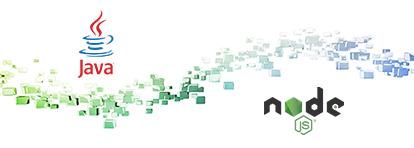That software that we currently use in our everyday life can be very advanced and innovative but it will look quite simple if we compare it with those solutions that are designed for in-house usage of enterprises and corporations. The achievements in enterprise software development allow businesses to have apps and software systems for solving practically all production and administrative tasks of any complexity.
In one of our previous blog posts, we’ve already explained the peculiarities of this type of solution, highlighted their benefits for businesses, and provided examples of the products available today. If you are interested to learn more about it, you can just follow the link. And in this article, we’d like to focus on the enterprise software development process, the technologies used for building such apps, and the factors that can influence the costs. If you are planning to launch a software product for your business needs, that’s exactly what you need to know.
Enterprise application development technologies: What are the best ones?
Let’s be honest; today, there are so many technologies and tools that you need to analyze a lot of information to make the right choice. Unfortunately, when customers who do not have in-house experts come to a software development company, they have practically no understanding of the advantages and disadvantages of different technologies. As a result, they have nothing to do but rely on the opinion of developers.
But many clients today want to make their choice of enterprise application development technologies more consciously. That’s why we’ve decided to share our knowledge in this aspect.
First of all, it is essential to know that enterprise application development includes back-end and front-end development and integration of a database. Therefore, for those solutions planned to be hosted on the cloud, it is necessary to find an appropriate platform.
So, what technologies do we recommend considering for enterprise app development?
Back-End Development
Java, Node.js, Python, and .NET are among the most widely-used technologies today.
Java is a rather secure and straightforward choice. It is platform-independent, which means that a code written in Java can run on any machine without any special software (however, the JVM still has to be present on the machine). A very important benefit of Java is the fact that it is multithreaded. Thanks to this characteristic, the program can perform several tasks simultaneously. However, Java is far from being perfect. It is memory-consuming and rather slow.
Node.js is comparatively easy to learn, and it is essential as developers can quickly master their skills to provide better solutions. As well as Java, it is open-source and platform-independent. Moreover, it offers easy scalability for apps as well as reduced time-to-market. In addition, Node.js has a package manager, the npm. Therefore, it is possible to manage numerous modules and solve intelligent dependency conflicts efficiently. But if Node.js is a crucial backend tech on your project, interaction with relational databases can become a challenge.
Python is another example of an easy-to-learn language that is also quite productive, thanks to its simplicity. It has an extensive library. With it, developers can add practically any functionality that is required. However, slow execution coupled with a large amount of memory usage can become an argument against choosing Python.
.NET software is said to be easily maintainable and relatively flexible. Though the original .NET framework was not fully open and did not ensure cross-compatibility, the .NET Core is the opposite. The code is fully open-source. The main issue is (just like in the cases that we’ve discussed above) related to memory. It sometimes doesn’t clean the memory that is not used anymore.
Front-End Development
Among the most widely applied technologies, it’s worth mentioning Angular, React.js, Vue.js. Their popularity among developers is relatively explicable. They all are not very difficult for learners. That’s why even those developers who started programming not so long ago can provide clean, easily understandable, and fully working code. Angular, React.js, Vue.js are component-based frameworks. Thanks to this characteristic, the code can be reused.
Angular is based on TypeScript, which ensures enhanced security of apps compared to JavaScript. It is important to note that Angular is maintained by Google and has a well-developed and strong community. Thanks to the trust from the developers’ side, today there are a lot of materials in this framework, and it is not challenging to get recommendations from experts on different issues.
React.js also has a strong community, and it allows building SEO-friendly solutions, which may not be a key advantage for enterprise web application development. However, it is known to have relatively poor documentation. Moreover, development can become a rather time-consuming procedure due to the constant expansion of a library, which may confuse engineers.
In contrast to React.js, Vue.js has good documentation. Moreover, this framework can be seamlessly integrated with many other technologies, and it offers a lot of freedom in software customization. However, as the main disadvantage, it is important to mention the lack of support of some essential plugins.
Databases
For enterprise software, we usually use MySQL, PostgreSQL, or MongoDB. And what is extremely important for enterprise app development, all of them demonstrate an excellent level of data protection.
MySQL is the most popular SQL database used today. Nevertheless, there is an opinion that all SQL databases are not the best option for huge systems. This opinion is because they offer more possibilities in interacting with smaller apps with well-structured data and a predefined number of rows in the tables. However, both MySQL and PostgreSQL have proven fully efficient for complex software. But bear in mind that they do not provide an option to define user groups while MongoDB does.
Let’s compare the languages that are supported by these three databases. First, we can see that MongoDB (which is, by the way, the only non-relational database in our row) is an absolute leader as it supports 29 programming languages. At the same time, MySQL and PostgreSQL can be programmed only in 19 and 10 languages, respectively.
Cloud Platforms
Cloud storage is a very widely-spread option for enterprise software. And without any doubt, AWS, Google Cloud Platform, and Microsoft Azure are the most robust market players.
AWS is the most flexible among its competitors. It supports a lot of third-party integrations and, as a result, can ensure vast possibilities for customization. In general, this cloud platform by Amazon is comparatively friendly to the open-source community. Moreover, it is compatible with both No-SQL and SQL databases.
Azure is not so flexible when it comes to integrations. However, it supports SQL databases, VBS, and other Windows development tools.
Google Cloud is the youngest platform on our list, but it has already gained a strong community. Unfortunately, it is also less flexible than AWS and supports only non-relational databases (like MongoDB).
As for pricing, Google Cloud is cheaper than AWS and Azure. But at the same time, AWS offers more options for price calculations (per hour, for resources used, etc.).

Learn more about the most popular cloud platforms and their capacities.
Enterprise application development process: How is it organized?
Now when you know at least the essential things about the technologies that can be used in enterprise web application development, let’s take a closer look at the process of how this software is being built. Of course, without understanding a task, it is impossible to say how long it will take to make a software product. But the development of an enterprise app usually takes at least 9-10 months. So, please, plan your time wisely if you are going to launch one.
The team usually includes:
- a project manager,
- a business analyst,
- a UI/UX designer,
- a backend developer,
- a frontend developer,
- a QA engineer,
- a DevOps engineer.
The exact composition of the team depends on the complexity of the task, the size of the project, and other factors. By the way, if you have your in-house developers and see that you need additional skills and talents for your project realization, but you are not ready to hire new employees, staff augmentation can be an excellent variant. You can read more about this business model here.
Of course, some stages and their duration can differ in each case. But we are going to present the plan in its generic form.
- Stage 1. Discovery phase and requirements analysis.
Believe it or not, this initial stage is practically the most important one (we do not want to underestimate all the rest, but this one can be considered a foundation of the entire project). The whole team needs to analyze the client’s problem with a product, the desired features, and the ongoing market conditions. All the analyzed data and the results are presented in the form of diagrams, user stories, wireframes, and others, which form a software specification document.
This stage usually takes nearly one month. - Stage 2. UI/UX design.
At this step, designers prepare mockups. Sometimes mockups are not enough for further project development, and there is a need to present prototypes. And if the creation of mockups can take nearly a month, this stage can take longer in the second case. One of the main criteria of a good UI/UX design for an enterprise app is perfect navigation and quick access to all the information necessary for users to perform their job responsibilities. And given that such software usually deals with huge volumes of data, it cannot be the most straightforward task. Therefore, everything should be very logical and straightforward. Sometimes, such parameters as shapes, images, and colors are essential in apps for a broad audience to take a back seat. 4-5 weeks can be said to be an average time needed for this stage. - Stage 3. Development.
When mockups are ready, it’s time to move to coding. A company may make different decisions regarding the organization of this process. The development is often going on in parallel to testing, which helps minimize risks of serious bugs before the release. All the errors in such a case can be corrected in time. This stage takes at least 5-6 months. But in the case of more complex systems, the time needed will be longer. Moreover, do not forget to consider the time required to integrate your software with different services and systems. - Stage 4. Testing.
As we’ve mentioned above, this stage is often combined with development. We recommend you not skip this stage and devote enough time and resources to it. Those bugs detected after the release will cost you much more than product testing. The duration of testing - 2-4 weeks. And then add nearly 2 weeks for the launch. - Stage 5. Support and maintenance.
When your app is ready and all its features correspond to what is described in the documents prepared at the first stage, it’s time to launch and deploy it at your enterprise. We can say that the stage of support and maintenance begins at this moment. And it ends only when you decide that you do not want to use this software anymore. Who provides support services? It depends. It can be either your in-house or outsourced team.
We will create a solution that will meet all your requirements and satisfy your business needs.
Cost of enterprise app development
If you ask us right now how many enterprises web development will cost, we will be able to name only a very approximate range. Usually, for a custom enterprise app, clients have to pay something in between $100K and $500K. Yes, the provided content is quite broad. But there isn’t a possibility to make any more precise estimations without considering the parameters and characteristics of the project. For example, it’s obvious that an inner chat for corporate use can’t cost as much as a huge multi-functional enterprise system.
But the costs of development services depend on many factors, and the complexity of the desired solution is only one of them. The other factors are:
- The tech stack that will be used;
- The desired functionality;
- The necessity to customize design (template or fully unique design);
- The necessity to integrate third-party services;
- The composition of the team;
- The time needed for the development;
- The region where the team is based (you can read more about different types of outsourcing and pricing policies in different zones here).
Given an average developer’s rate in Eastern Europe of around $40-50 and optimal team composition of about 6-7 specialists, we will have the following prices that you can use for planning your budget:
- $120K-$160K for a simple app
- $160K-$500K for an app of a medium complexity level
- $500K+ for a large enterprise app with expanded functionality
But let us highlight that the provided figures are approximate and may vary depending on numerous factors. However, be careful! Suppose a company you are going to work with names costs significantly lower than the ones mentioned above. In that case, it can be a serious reason to check whether this company has a good reputation and expertise in enterprise app development.
Wrapping up
As you see, creating enterprise solutions can be more expensive and time-consuming than developing apps for a broad audience. However, given all the new possibilities and benefits that enterprise systems can ensure for your business growth, it’s worth considering this software for the needs of your enterprise. Over the years of work at Geomotiv, we’ve managed to gain rich experience in building this type of product, and we will be happy to apply it to building a solution for you. Just contact us via our website, and we will reach you as soon as possible.






